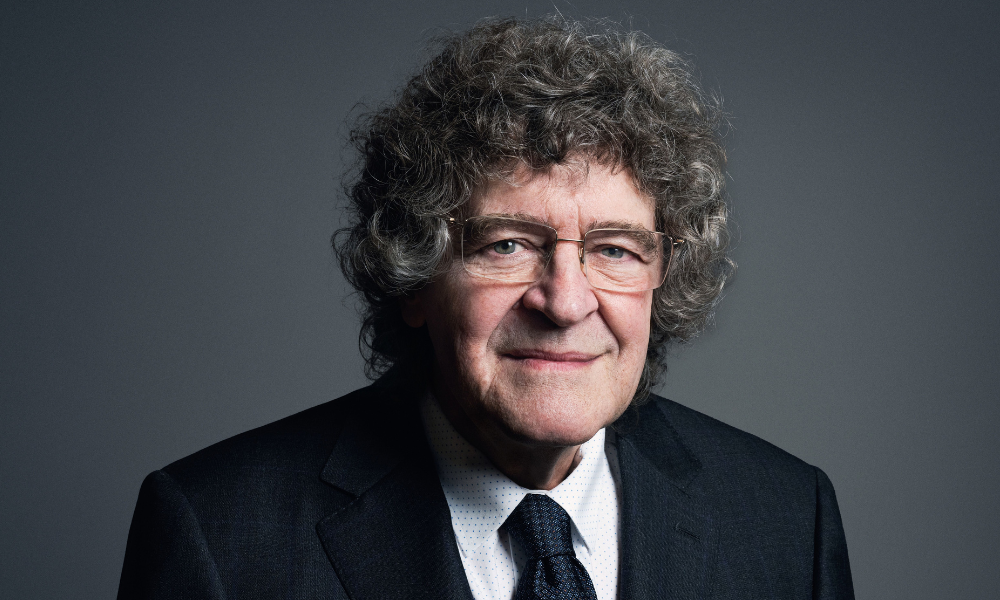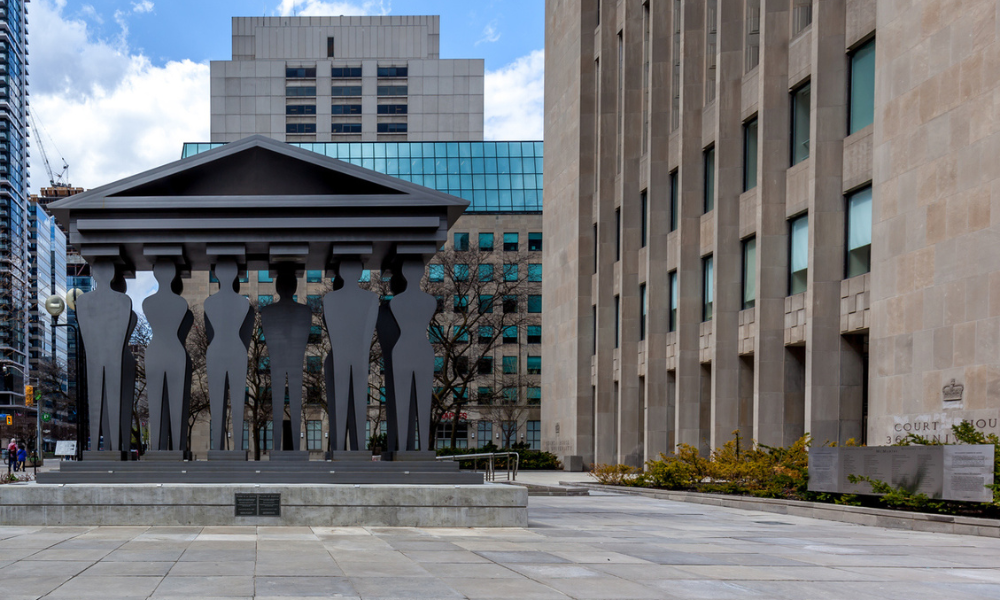We’ve all heard how Ontario is spending $32.5 billion in provincial and federal funds to build roads, schools, and public transit this year and next.
 The message has been hard to miss with all the TV, radio, and newspaper ads that must have cost a fortune in and of themselves.
The message has been hard to miss with all the TV, radio, and newspaper ads that must have cost a fortune in and of themselves.
But the big question for the construction industry, an important source of jobs, is what happens after 2010 when the public money runs out?
Could a simple regulatory change create 10,000 more jobs and help keep that stimulus going? Yes, says Frank Zechner, a lawyer practising environmental and construction law.
He’s just completed a study of the Environmental Assessment Act process for the Residential & Civil Construction Alliance of Ontario, an industry association of labour groups and contractors.
Streamlining the process could have a huge impact on public works projects, save money, and create 10,000 badly needed jobs now, he says.
So let’s get back to that infrastructure money. How long is it going to last?
“I think 2010 is going to be OK,” says Katherine Jacobs, director of research and analysis for the Ontario Construction Secretariat, which is also an industry group of unions and contractors.
“There’s the big transit plans and infrastructure for the Pan Am Games as well as nuclear facility construction and refurbishment on the table in Ontario, which will create business opportunities.”
Still, she says: “2011 is a question mark.”
The outcome will hinge on the private sector’s ability to step in and pick up the load as the federal and provincial government stimulus packages run out.
That infrastructure stimulus package specified “shovel-ready projects” only, ostensibly so the rubber would hit the road faster. There was another reason, however: the dreaded environmental assessment.
For a public project to proceed in Ontario, whether it’s adding a new nuclear facility or simply widening a road, there has to be an environmental assessment.
And that’s the point. In some cases, an assessment is warranted, but in too many others, the construction alliance says it’s a boondoggle of red tape that delays projects, smothers job creation, and adds cost.
Zechner’s study - the second of its kind - suggests a regulatory change could streamline the process while cutting costs and diverting more resources to the most significant infrastructure projects.
It’s a question of process over the end result, says construction alliance executive director Andy Manahan, who calls Ontario’s rules “the most cumbersome in Canada.”
He’s being kind. They’re also among the most cumbersome in the world. That’s why Singapore can build a kilometre of subway track a year and Madrid can conceptualize, build, and open public works projects in a fraction of the time it takes to get anything done here.
Of the 140 municipal projects looked at by Zechner, the average delay caused by environmental assessments was 20 months. That’s not just 20 months of paperwork; it’s 20 months of cost escalations.
“A municipality says it has $2 million for a road widening, but the [assessment] takes so long [that] the cost escalates to $2.5 million,” says Zechner.
“So they say, ‘Oh, now it’s beyond our budget scope.’ By the time they get to it the next year, the [assessment] data is stale, so they have to do an addendum. And still the costs are rising.”
Zechner says about 14 cents of every dollar spent on infrastructure end up going to environmental assessment costs and delays.
Now, no one is saying we should dispose of those processes and start building nuclear power plants and waste treatment centres without proper analysis.
“But do you need an [assessment] to widen a road when it’s in the official plan or add a bicycle lane which has zero carbon emissions?” Zechner asks.
Indeed, the environmental assessments in some cases have become political footballs where opponents of a project can take their resistance to pedantic levels. Witness the City of Toronto’s move to spend $100,000 to argue against a sewer line running from York Region to Durham Region without crossing Toronto’s jurisdiction.
The construction alliance is hoping Queen’s Park will work with Ottawa to accept one level of regulations, thereby eliminating duplication and dispensing of further studies of alternatives.
It also wants to remove so-called “bump-up” requests for formal reviews under the regulations if they are frivolous or vexatious, although making the judgment call on that one is a potential political nightmare.
Finally, it wants to create a municipal-class environmental assessment regulation to fast-track basic infrastructure projects in the same way the government streamlined the process for public transit.
No one is arguing for abandoning environmental assessments. Instead, the call is for a recognition that public works are generally for the public good and that we shouldn’t be spending money allocated for sewers, water mains, roads, and bridges on a process gone mad.
Ian Harvey has been a journalist for 32 years writing about a diverse range of issues including legal and political affairs. His e-mail address is [email protected].
 The message has been hard to miss with all the TV, radio, and newspaper ads that must have cost a fortune in and of themselves.
The message has been hard to miss with all the TV, radio, and newspaper ads that must have cost a fortune in and of themselves.But the big question for the construction industry, an important source of jobs, is what happens after 2010 when the public money runs out?
Could a simple regulatory change create 10,000 more jobs and help keep that stimulus going? Yes, says Frank Zechner, a lawyer practising environmental and construction law.
He’s just completed a study of the Environmental Assessment Act process for the Residential & Civil Construction Alliance of Ontario, an industry association of labour groups and contractors.
Streamlining the process could have a huge impact on public works projects, save money, and create 10,000 badly needed jobs now, he says.
So let’s get back to that infrastructure money. How long is it going to last?
“I think 2010 is going to be OK,” says Katherine Jacobs, director of research and analysis for the Ontario Construction Secretariat, which is also an industry group of unions and contractors.
“There’s the big transit plans and infrastructure for the Pan Am Games as well as nuclear facility construction and refurbishment on the table in Ontario, which will create business opportunities.”
Still, she says: “2011 is a question mark.”
The outcome will hinge on the private sector’s ability to step in and pick up the load as the federal and provincial government stimulus packages run out.
That infrastructure stimulus package specified “shovel-ready projects” only, ostensibly so the rubber would hit the road faster. There was another reason, however: the dreaded environmental assessment.
For a public project to proceed in Ontario, whether it’s adding a new nuclear facility or simply widening a road, there has to be an environmental assessment.
And that’s the point. In some cases, an assessment is warranted, but in too many others, the construction alliance says it’s a boondoggle of red tape that delays projects, smothers job creation, and adds cost.
Zechner’s study - the second of its kind - suggests a regulatory change could streamline the process while cutting costs and diverting more resources to the most significant infrastructure projects.
It’s a question of process over the end result, says construction alliance executive director Andy Manahan, who calls Ontario’s rules “the most cumbersome in Canada.”
He’s being kind. They’re also among the most cumbersome in the world. That’s why Singapore can build a kilometre of subway track a year and Madrid can conceptualize, build, and open public works projects in a fraction of the time it takes to get anything done here.
Of the 140 municipal projects looked at by Zechner, the average delay caused by environmental assessments was 20 months. That’s not just 20 months of paperwork; it’s 20 months of cost escalations.
“A municipality says it has $2 million for a road widening, but the [assessment] takes so long [that] the cost escalates to $2.5 million,” says Zechner.
“So they say, ‘Oh, now it’s beyond our budget scope.’ By the time they get to it the next year, the [assessment] data is stale, so they have to do an addendum. And still the costs are rising.”
Zechner says about 14 cents of every dollar spent on infrastructure end up going to environmental assessment costs and delays.
Now, no one is saying we should dispose of those processes and start building nuclear power plants and waste treatment centres without proper analysis.
“But do you need an [assessment] to widen a road when it’s in the official plan or add a bicycle lane which has zero carbon emissions?” Zechner asks.
Indeed, the environmental assessments in some cases have become political footballs where opponents of a project can take their resistance to pedantic levels. Witness the City of Toronto’s move to spend $100,000 to argue against a sewer line running from York Region to Durham Region without crossing Toronto’s jurisdiction.
The construction alliance is hoping Queen’s Park will work with Ottawa to accept one level of regulations, thereby eliminating duplication and dispensing of further studies of alternatives.
It also wants to remove so-called “bump-up” requests for formal reviews under the regulations if they are frivolous or vexatious, although making the judgment call on that one is a potential political nightmare.
Finally, it wants to create a municipal-class environmental assessment regulation to fast-track basic infrastructure projects in the same way the government streamlined the process for public transit.
No one is arguing for abandoning environmental assessments. Instead, the call is for a recognition that public works are generally for the public good and that we shouldn’t be spending money allocated for sewers, water mains, roads, and bridges on a process gone mad.
Ian Harvey has been a journalist for 32 years writing about a diverse range of issues including legal and political affairs. His e-mail address is [email protected].







